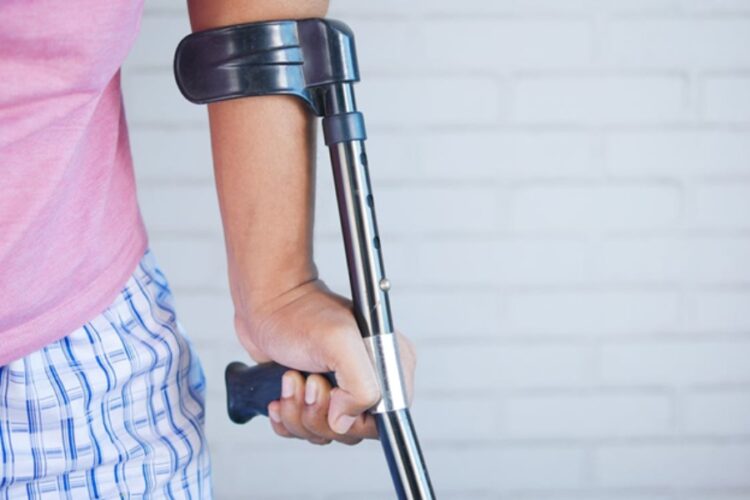Want to know what separates winning personal injury cases from total disasters?
It’s not the expensive lawyers or flashy TV commercials. The secret weapon that makes or breaks every case is something much simpler: negligence.
Here’s the thing…
Most people think personal injury law is some complex legal maze. But once you understand negligence, everything else clicks into place. With personal injury filings surging 78% in 2024, more people than ever need to get this right.
Without understanding negligence, you’re basically fighting blindfolded.
What you’ll discover:
- What Is Negligence in Personal Injury Law?
- The Four Essential Elements That Make Negligence Cases Work
- Why Most Personal Injury Cases Never See a Courtroom
- How to Build a Strong Negligence Case
What Is Negligence in Personal Injury Law?
Negligence is the foundation that every winning personal injury case is built on.
Think of it as the “smoking gun” in your case. When someone gets hurt, the law doesn’t just hand out free money. You have to prove that someone else’s carelessness directly caused your injury.
Here’s where it gets interesting…
Negligence isn’t about proving someone is a terrible person who wanted to hurt you. It’s about showing they failed to act like a reasonable person would in the same situation.
Let me give you a simple example. A driver runs a red light and smashes into your car. That’s negligence. They didn’t wake up planning to ruin your day, but they failed to follow basic traffic rules that every reasonable driver should follow.
The same rule applies everywhere:
Store owners who don’t clean up spills. Doctors who miss obvious symptoms. Construction companies that ignore safety rules.
Here’s why this matters…
Understanding negligence is the difference between getting fair compensation and walking away empty-handed. The best personal injury law services know that building a bulletproof negligence case requires expertise, experience, and a deep understanding of how these cases actually work. Take Andrew Pickett Law in Florida for example – they’ve made their reputation by focusing on exactly these kinds of complex negligence situations and turning them into winning outcomes for their clients.
The Four Essential Elements That Make Negligence Cases Work
Want to know why some people win big while others get nothing?
It comes down to four critical pieces. Miss even one, and your case crumbles like a house of cards.
Duty of Care
First, you need to prove the other party owed you a duty of care. They had a legal responsibility to keep you safe.
This includes obvious stuff like:
- Drivers must follow traffic laws
- Store owners must keep floors safe
- Doctors must provide competent care
Seems simple, right? But establishing this duty can get tricky depending on the situation.
Breach of Duty
Next, you need to show they broke that duty. They didn’t just make an innocent mistake – they fell way below what any reasonable person would do.
The key question is always: What would a reasonable person have done here?
If a reasonable driver stops at red lights, then running one is a breach. If a reasonable store owner puts up wet floor signs, then not doing it is a breach.
Causation
This is where cases get complicated fast. You must prove two different types:
Cause in Fact: Their screw-up directly caused your injury.
Proximate Cause: Your injury was a predictable result of what they did.
Sometimes people get hurt, but the connection to someone else’s negligence isn’t clear enough to win.
Damages
Finally, you must have real damages to recover:
- Medical bills
- Lost paychecks
- Property damage
- Pain and suffering
Here’s the truth: Without actual damages, there’s no case. Period.
Why Most Personal Injury Cases Never See a Courtroom
This might shock you…
About 95% of personal injury cases settle before ever seeing a judge. Only 5% actually make it to trial.
Why does this happen?
Simple. Both sides usually prefer a sure thing over rolling the dice in court. Trials cost a fortune, take forever, and nobody knows what’ll happen.
When negligence is crystal clear, insurance companies would rather settle than risk getting hammered by a jury.
But don’t think this means easy money.
The threat of trial is what drives those settlement talks. Insurance companies know that plaintiffs win about 50% of cases that do go to trial. So they’re motivated to avoid that gamble.
The stronger your negligence case, the more leverage you have.
How to Build a Strong Negligence Case
Building a winning case isn’t about luck – it’s about smart preparation.
Document Everything Right Away
The first few minutes after an accident are absolutely critical. Take photos of everything, get witness contact info, and see a doctor even if you feel fine.
Here’s a smart move: Start a journal documenting your injuries and how they affect your daily life. This becomes incredibly powerful evidence later.
Gather the Right Proof
Different types of cases need different evidence:
Car accidents: Police reports, traffic cameras, and vehicle damage photos.
Slip and falls: Photos of the dangerous condition and witness statements about how long it existed.
Medical malpractice: Medical records and expert opinions showing what proper care should have looked like.
Work with Experienced Legal Help
Personal injury law has tons of hidden traps that can destroy your case. An experienced attorney knows how to investigate properly, gather the right evidence, and present your negligence case in the strongest way possible.
They also know every trick insurance companies use to minimize payouts.
Avoiding Case-Killing Mistakes
Even with solid negligence, certain mistakes can torpedo your compensation.
Waiting Too Long to File
Every state has deadlines for filing personal injury cases. Miss that deadline, and your case dies instantly – no matter how strong your negligence claim is.
Admitting Fault
Never, ever admit fault at the accident scene or to insurance adjusters. Even saying “I’m sorry” can get twisted into admitting you caused the accident.
Skipping Medical Treatment
If you don’t follow your doctor’s orders, insurance companies will argue that your ongoing problems are your fault for not getting proper care.
Taking the First Offer
Insurance companies always start with lowball offers hoping you’ll take quick cash. These first offers almost never reflect what your case is actually worth.
The Real Impact of Negligence on Your Results
The numbers tell an incredible story about how negligence affects outcomes.
Motor vehicle accidents, which usually have clear-cut negligence, have a 61% success rate for victims at trial. Compare that to medical malpractice cases, where proving negligence is way more complex, and the success rate plummets to just 19% for plaintiffs.
The difference is huge.
Clear, obvious negligence leads to much better results. Complex cases where negligence is harder to prove face much tougher odds.
Your Next Move
Here’s what most people miss about negligence in personal injury law…
It’s not just about getting paid for what happened to you. It’s about accountability. When negligent people and companies face real consequences, it makes them think twice before cutting corners again.
With 39.5 million injury cases requiring medical treatment every year in America, negligence affects millions of lives. Understanding how it works puts you in control and helps you get fair compensation.
Remember this: Proving negligence takes expertise, solid evidence, and experience. Don’t try to handle these complex legal waters alone. The right legal team can mean the difference between a fair settlement and getting nothing.
The clock starts ticking the second your injury happens.
Every day you wait is another day that evidence disappears and witnesses forget important details. If someone else’s negligence caused your injury, you owe it to yourself to understand your options and take action.
Because at the end of the day, negligence cases aren’t just about money – they’re about justice, accountability, and making sure what happened to you doesn’t happen to the next person.










